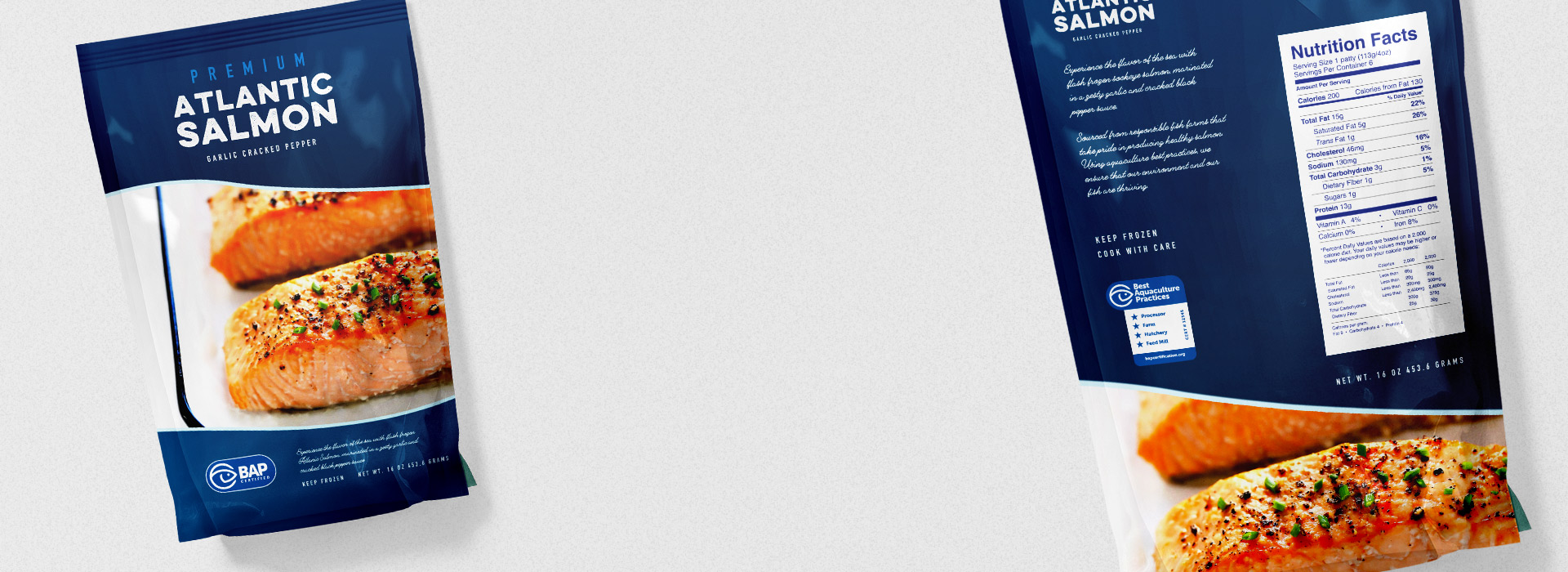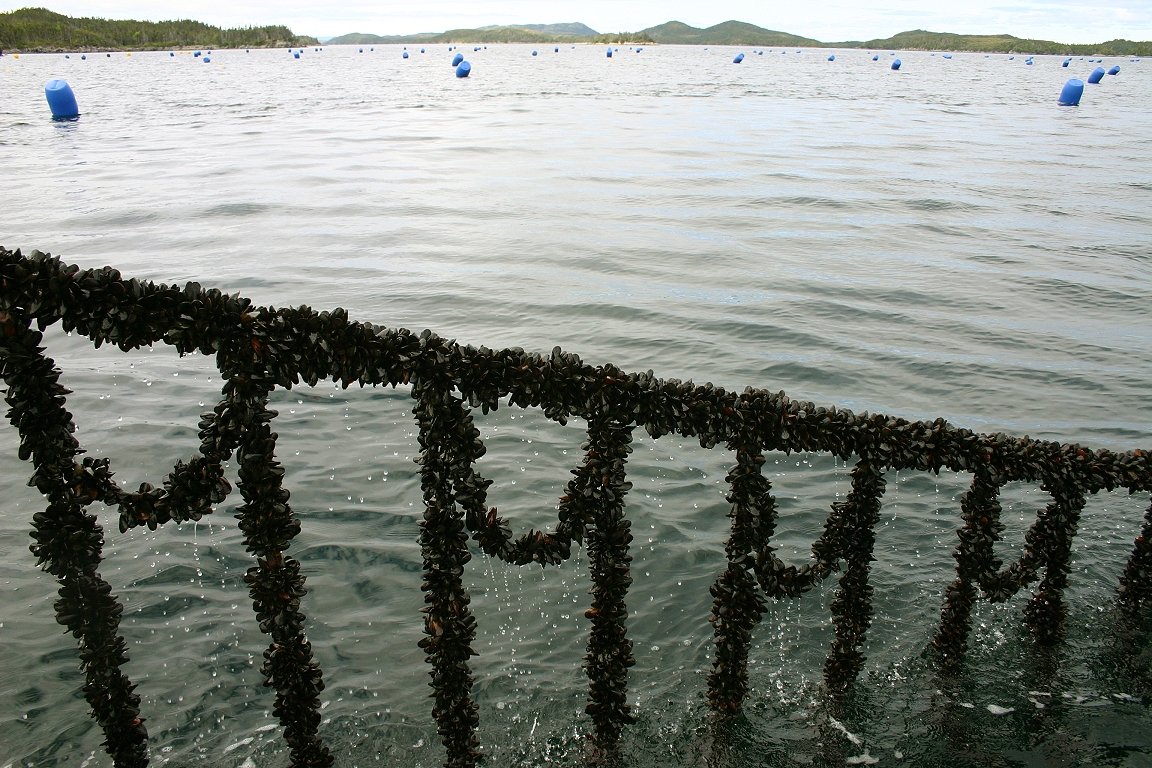
Newfoundland and Labrador is a leader in sustainable aquaculture, producing some of the greatest shellfish in Canada.
I recently had the opportunity to take my first trip out to the province to see this shellfish aquaculture firsthand. I visited both an oyster and a mussel farm to learn more about how shellfish are farmed and the sustainable practices that shellfish farmers are upholding.
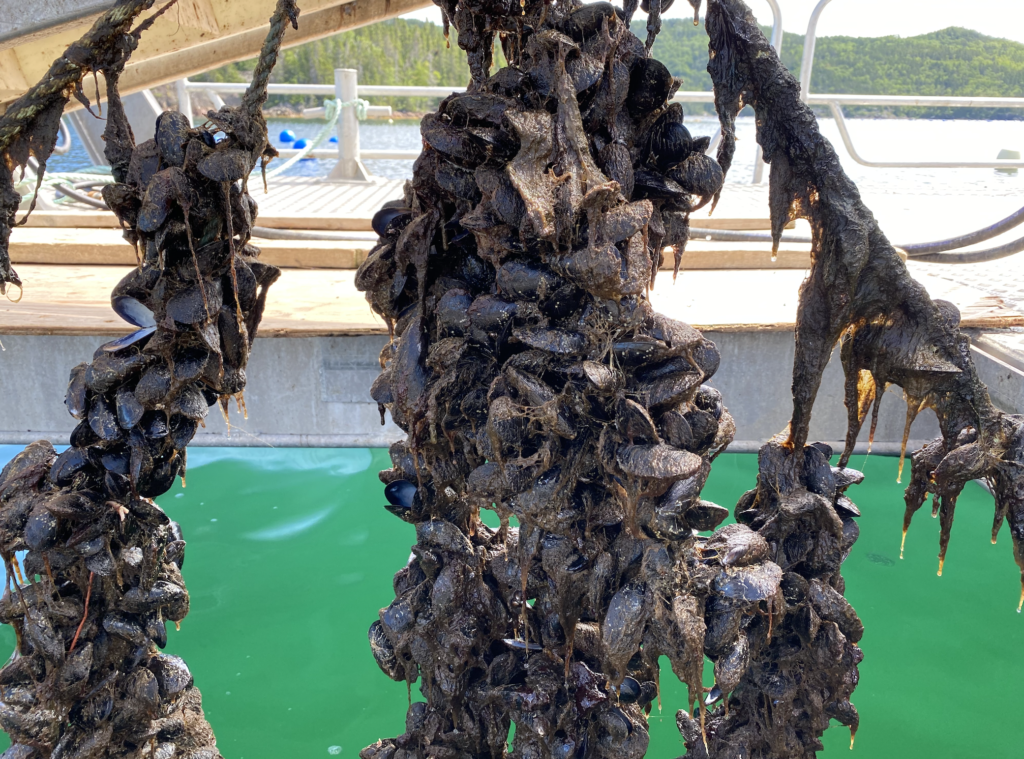
What is shellfish aquaculture?
Shellfish aquaculture refers to the farming of marine species like oysters, mussels, clams, and crabs. Farming shellfish has been happening for centuries, dating all the way back to the Ancient Egyptians and the Aztecs.
Shellfish aquaculture in Newfoundland
Atlantic Canada, including the provinces of Newfoundland and Labrador, Nova Scotia, Prince Edward Island, and New Brunswick, pioneered the aquaculture industry, and continues to be recognized as an innovative international leader today.
In Newfoundland, the industry has been a saving grace for communities who less than a decade earlier had been rocked by the closure of the Atlantic cod fishery. The 1992 cod collapse resulted in the largest layoff in Canadian history, putting over 30,000 Newfoundlanders out of work and eliminating the main economic engine of the province.
Today, aquaculture in Newfoundland directly and indirectly employs about 2000 people and is worth over a quarter of a billion dollars. From highly-skilled engineers, veterinarians and researchers to marine biologists, scientists and farmers, the individuals who work in the aquaculture industry are world-class experts in their fields. For many, these jobs are the backbone of their communities. In some rural communities, over 90% of employment comes from aquaculture – a testament to the significance of farmed seafood in Newfoundland.
Moreover, aquaculture gives the province an opportunity to help fill the forecasted global seafood shortage of 50-80 million tonnes by 2030.
Newfoundland’s main shellfish aquaculture is Blue mussels. However, the province has recently begun commercially farming oysters as well.
Beyond shellfish, Newfoundland also farms Atlantic Salmon, Steelhead Trout, and Atlantic Cod. All delicious species, but for the purposes of this post, we’re going to focus exclusively on shellfish, so we’ll be digging into blue mussel and oyster farming in Newfoundland. However, if you want to learn more about the other species, check out the Newfoundland Aquaculture Industry Alliance’s website here.
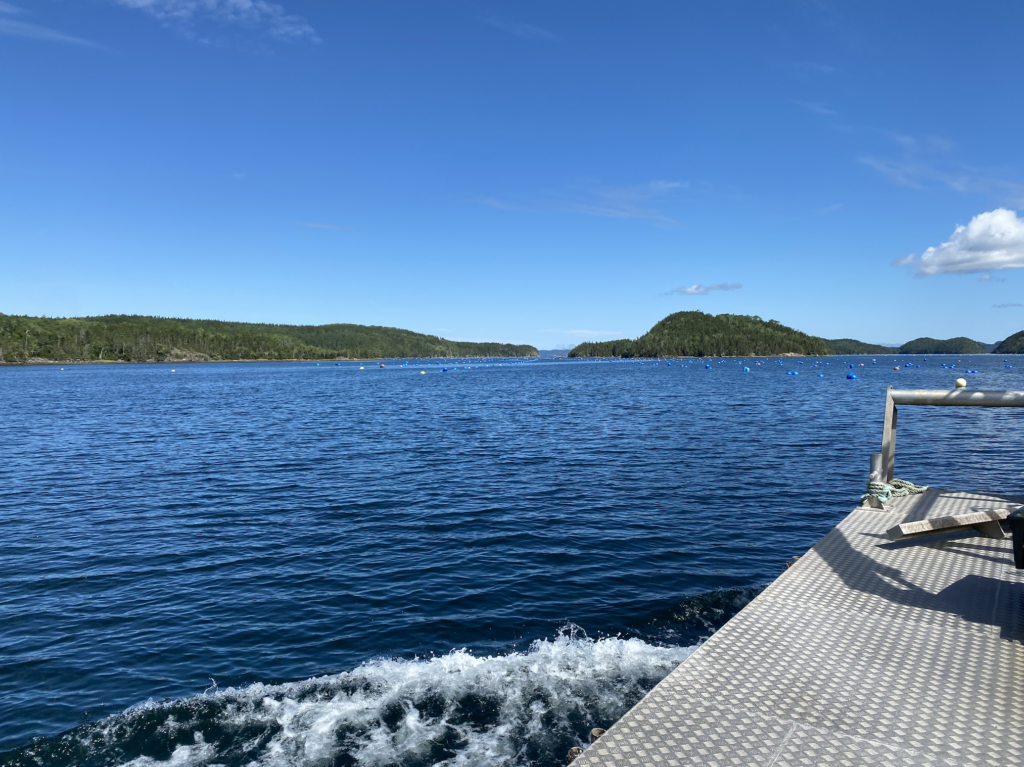
Blue Mussels
In Newfoundland and Labrador, the blue mussel is the main commercial shellfish aquaculture species. The province produces almost 4000 tonnes of blue mussels annually, contributing over $13 million to the province’s economy.
Currently, there are 53 commercial shellfish site licences that cover a combined area of 4,403 hectares. The mussel farms are located in the most pristine areas of the ocean, where the Canadian Shellfish Sanitation Program has classified waters as “open” year round. These sites are located in rural and remote areas (trust me, I know, I went all the way out to see them!) that are far from an industrial activity or risk of land drainage impacts.
These waters are where the warm and tropical Gulf Stream first encounters the frigid tides of the Labrador Current, resulting in the perfect conditions for Newfoundland Blue Mussels to thrive.
Newfoundland’s mussels are grown using rope culture, which is also known as long lining. 20-feet long lines are placed in the water to create a home for mussels to attach to. This is one of the newest methods of mussel farming, developed to resist storm and wave effects, while also allowing the mussels to thrive below surface ice that develops during the chilly Newfoundland winters.
Newfoundland’s blue mussels have a growth cycle of about three years. That cycle begins with spawning. To encourage spawning, seed is caught on collector ropes hung from the floating lines. The mussels are left to grow out a little bit before being collected for socking and sorted. Then, they’ll move onto grow-out ropes or into stockings that are carried out until the mussels reach marketable size.
Over the course of that time, the mussels will spawn and grow larger on these ropes, until it’s time to harvest them. At that point, the ropes are pulled out of the water using this machine, and the mussels are off to a factory to be sorted and cleaned before they make it onto our plates.
Since the mussels are cultivated on ropes rather than on the ocean bottom, they have clean, unmuddied flavours and a firm texture that is free of grit – and that’s just part of what makes them the best mussels in the world!
Read next: Coconut Curry Mussel Recipe
Sustainability on Newfoundland’s Mussel Farms
The process of farming mussels is very sustainable, producing virtually no carbon emissions and leaving minimal impact on the environment. In fact, mussels actually have a net positive benefit on the ecosystem, sequestering CO2 and acting as ecosystem engineers, which increase biodiversity. Mussels also don’t require any inputs such as feed, meaning there is nothing new being introduced to the ecosystem through mussel farming. Everything that a mussel requires to survive and grow is supplied naturally by the nutrients in the water column!
The industry in Newfoundland also takes their sustainability commitments a step further, using 100% biodegradable cotton socking mesh for harvesting mussels and working with reusable and recyclable materials throughout the production chain.
Newfoundland’s blue mussels are also the first ever certified organic mussels in North America, meaning their farming practices meet the requirements of the Canadian Organic Aquaculture standard, which includes locating farms away from industrial activity, not treating with prohibited substances, and harvesting in a way that doesn’t negatively impact the surrounding environment.
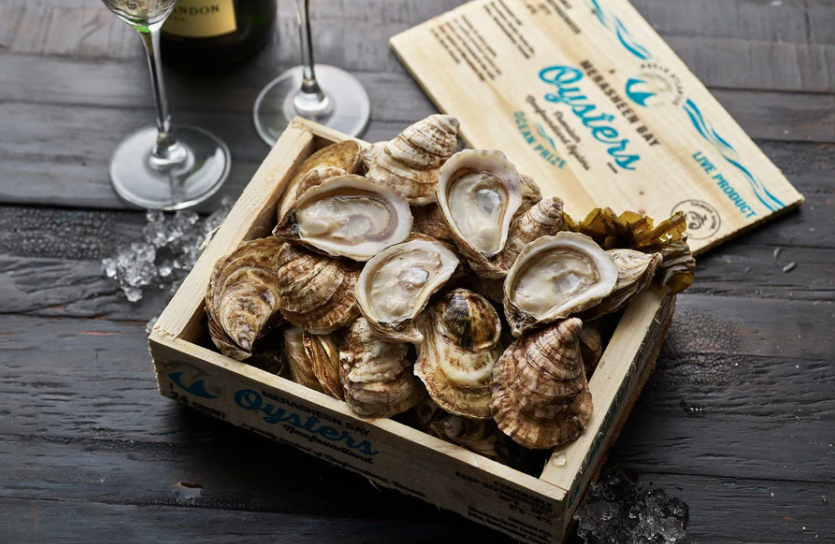
Oysters
Oysters from Newfoundland (Crassostrea Virginica) are the newest addition to Canada’s spectacular oyster production. Nestled into a cold pristine bay on Merasheen Island, the Newfoundland oysters reap the benefits from the Labrador Sea and Arctic currents.
Oyster production is relatively small in the province, producing about one million pounds of oysters per year, but looking to scale up quickly to get Newfoundland oysters on the map.
These oysters are grown in cages on floating rafts that hold about 1200-1500 oysters per cage. These floating rafts for oysters make no contact with the seafloor, and thus the shellfish are harvested with little to no bycatch or environmental damage. As filter feeders, oysters also don’t require any external feed (they extract nutrition from plankton in the seawater), which means no pressure is put on wild fish stocks for feed. Farming shellfish even offers ecosystem benefits by reducing the nutrient load in the water.
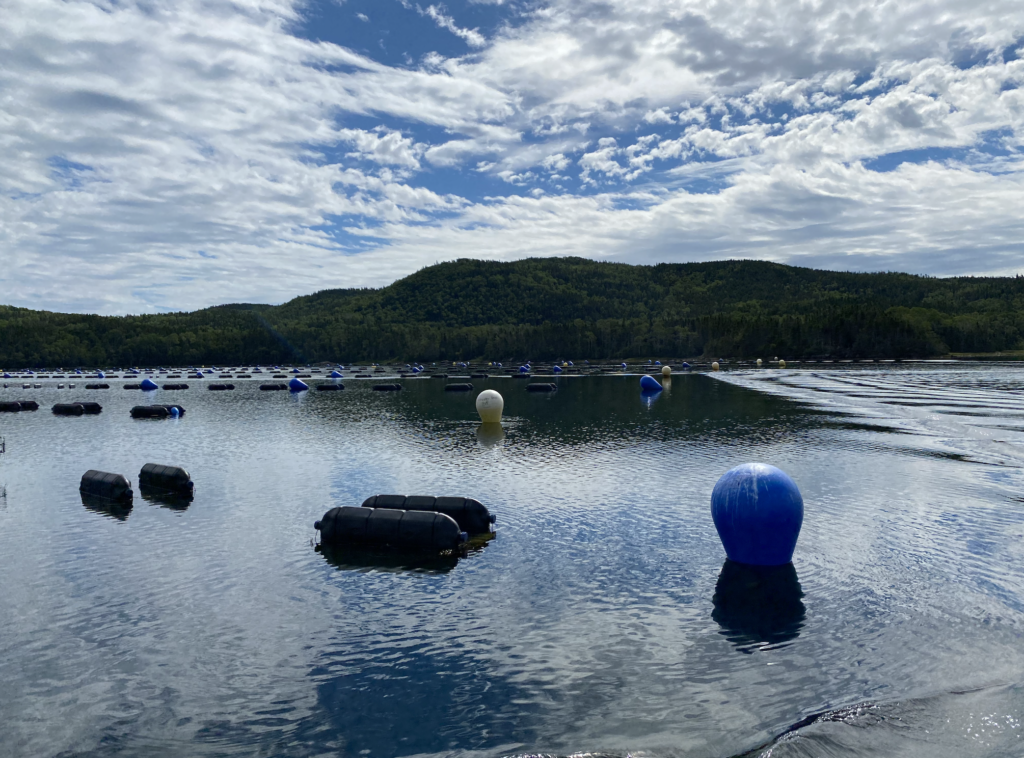
Ocean Wise Recommended Seafood
Merasheen Bay oysters are also recommended by the Ocean Wise seafood program due to the sustainable farming practices used to cultivate and harvest them.
These oysters are the perfect cocktail oyster. Coming in at about 2.5 inches in size, a full cup of meat, and the perfect burst of salinity with just a hint of seaweed, these oysters taste like a summer day on the Atlantic Ocean. Merasheen Bay oysters are also noted for their strong shell that’s super easy to open, making these the perfect oysters for beginner shuckers!
To learn more about shellfish aquaculture in Newfoundland (including where to get your hands on some delicious oysters and mussels!), check out aquaculturenl.ca/
Seaside with Emily was invited to Newfoundland as a guest of the Newfoundland Aquaculture Industry Alliance. All opinions are my own.


